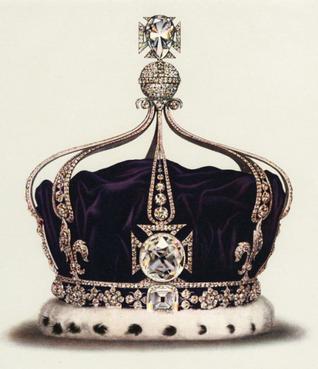
British press pick up Indian Solicitor General’s submission before the SC that the heirs of Maharaja Ranjit Singh gave the gem as “voluntary compensation.”
New claims over the Koh-i-Noor diamond make their periodic appearance in the United Kingdom. Most of them flounder and finally sink as they make their way through the law courts — or indeed the court of public opinion, getting a day or two of media light at best. However, the relinquishment of a claim to the much-contested gem is a different matter and a cause for interest, as we just saw.
The Indian Solicitor General’s submission before the Supreme Court that the heirs of Maharaja Ranjit Singh gave the diamond to the British as “voluntary compensation” for the expenses incurred in the Anglo-Sikh wars was widely picked up by the British press, with the leading British parliamentarian of Indian-origin, Keith Vaz, even issuing a statement in support of the Government of India’s “stand.”
A gem of a debate again
The government’s subsequent clarification dissociating itself from the view of its Solicitor General brings the debate over the 106-carat symbol of British colonialism, which at present glints harshly from the crown once worn by the former Queen Mother, back to where it was.
Questions about ownership, authorship, theft and possession in the context of colonialism and today were raised at a recent exhibition at Tate Britain, Artist and Empire, which brought together a vast and unexpected array of works from collections across Britain.
Says Javed Majeed, a historian at King’s College, “The current Koh-i-Noor diamond controversy [comes] at a point in history when the terms “Indian”, “English” and “British” are in crisis again. In India we have a strong Hindu nationalist government which has re-defined what “Indian” means and thrown secularism into disarray. Claims have also been filed in Pakistan to return the diamond to Punjab there, from where it was gifted or taken [depending on your point of view]. In 2000, even the Taliban in Afghanistan asked the Queen to return the gem because of its brief association with that region at one point in time.”
Brexit and monarchy angst
In an era of economic and political uncertainties — in Britain associated with Brexit and what it portends — “anxieties about the future of the monarchy have intensified, and not surprisingly the focus of this worry is the crown itself as an actual object as well as an institution,” Dr. Majeed argues.
“Moreover, Britain’s imperial past surfaces in obvious and sometimes surreptitious ways in all these current debates, from the question of who owns the diamond to ideas of British power in the world should it leave the EU.”
Legacy control and mistrust
Legacy-control and legacy-mistrust can happen on both sides. A senior curator at a prominent British national collection in London told The Hindu that the authorities of the Victoria Memorial Museum in Kolkata refuse to lend their works from their collections to British museums.
The collection includes works by Johan Zoffany, William Hodges and Thomas and William Daniell. “Britain put in several requests to borrow art but they have all been turned down,” the senior curator, who did not wish to be named, said.
Correction
This story has been corrected for a factual error. Changed “Anglo-Maratha” war into “Anglo-Sikh” war
source: http://www.thehindu.com / The Hindu / Home> International / by Parvathi Menon / London – April 20th, 2016